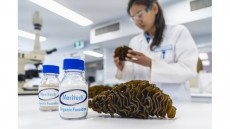Study boosts microbiome fitness and diet quality link

Texas’ Baylor College of Medicine report that a ‘healthier diet’ is associated with higher abundance of beneficial bacteria such as those with anti-inflammatory properties.
Meanwhile a poor-quality diet is linked to potentially pathogenic bacteria, such as Fusobacteria that has been linked to colorectal cancer.
“In this study, rather than looking at individual diets, we focused on dietary patterns as defined by the Healthy Eating Index (HEI)-2005 and how they relate to the microbiome," said study author Dr Li Jiao, associate professor of medicine-gastroenterology at the college.
"In a previous study, we found that HEI-2005 is associated with reduced risk of pancreatic cancer."
Gut health and diet link
The link between diet and gut health is well-established with a previous study noting that even an acute change in diet is enough to change microbial make-up within 24 hours. Its effects are reversed in just 48 hours after the diet is stopped.
Further research points to the gut microbiome of animals, which when fed a high-fat or high-sugar diet becomes more prone to circadian rhythm disruption.
Food’s role in an altered microbiome and disease onset makes a strong argument for the link as type 2 diabetic’s gut microbiota shows diabetes-associated markers that show membrane transport of sugars and branched-chain amino acids.
In addition, this gut environment also exhibits xenobiotic metabolism, and sulphate reduction along with decreased bacterial chemotaxis, butyrate synthesis and metabolism of cofactors and vitamins.
Furthermore, scientists observe obesity patients’ altered intestinal Bacteroides:Firmicutes ratio, with greater relative abundance of Firmicutes.
Dr Jiao and colleagues employed a number of sequencing techniques to look at the type and numbers of bacteria in colonic mucosal biopsies.
The samples came from 50- to 75-year-old participants who had a colonoscopy between 2013 and 2017. The subjects were polyp-free and in good health.
A food frequency questionnaire was used to report their dietary consumption before a colonoscopy process was carried out.
HEI and microbiota profile
Using the Healthy Eating Index (HEI), the research team found the structure of the microbiota differed according to the scores for total HEI, total and whole fruits (HEI 1 and HEI 2), whole grains (HEI 6), milk products and soy beverages (HEI 7), and solid fat, alcohol, and added sugar (HEI 12).
A lower score for total HEI and HEIs 2, 7, and 12 was associated with significantly lower richness, while a lower score for total HEI was associated with significantly reduced relative abundance of Parabacteroides, Roseburia, and Subdoligranulum but higher Fusobacterium.
A lower score for HEI 2 was associated with lower Roseburia but higher Bacteroides. A lower score for HEI 7 was associated with lower Faecalibacterium and Fusobacterium but higher Bacteroides.
A lower score for HEI 12 was associated with lower Subdoligranulum but higher Escherichia and Fusobacterium.
Less abundant bacteria such as Alistipes, Odoribacter, Bilophila, and Tyzzerella were also associated with dietary quality.
“Other factors, such as ageing, genetics or certain medications, also influence the risk of disease but we cannot modify them," Dr Jiao said.
"Diet, on the other hand, can be modified and thus provides a strategy to develop a microbiome that promotes healthy living.
“We suggest that modifying the microbiome through diet may be a part of a plan to reduce the risk of chronic diseases."
Source: The American Journal of Clinical Nutrition
Published online: DOI: 10.1093/ajcn/nqz139
“Dietary quality and the colonic mucosa–associated gut microbiome in humans.”
Authors: Yanhong Liu et al.

















